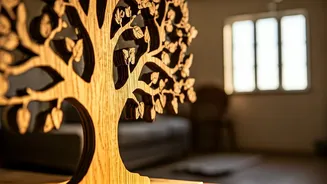Understanding Cultural Differences
Cultural clashes often arise from differing values, communication styles, and expectations within a relationship. These differences, which encompass everything
from how individuals express affection to how they manage finances, can easily lead to misunderstandings and conflicts. For instance, directness in communication, common in some cultures, might be perceived as rude or aggressive in others where indirect communication is the norm. Values also play a key role; differing perspectives on family roles, gender roles, or the importance of tradition can significantly impact daily life and decision-making within the relationship. Furthermore, the role of external pressures, like family expectations and societal norms, vary greatly between cultures and add another layer of complexity. Awareness of these differences is essential because it allows partners to approach conflicts with empathy and a willingness to understand each other's perspectives, rather than solely reacting from their own cultural biases. Without this awareness, minor differences can escalate, creating a sense of distance and dissatisfaction. It’s important to remember that neither partner's cultural approach is inherently 'right' or 'wrong'; instead, they are simply different ways of viewing the world, shaped by unique historical and social contexts. Recognising this can lay the groundwork for a more harmonious and respectful relationship.
Open Communication is Key
Open and honest communication forms the cornerstone of any successful intercultural relationship, providing a crucial bridge over cultural differences. Partners must create a safe space where they can express their thoughts and feelings without fear of judgment or criticism. This involves active listening, where each partner strives to understand the other's perspective, reflecting on what is being said, and asking clarifying questions to ensure complete comprehension. It's equally important to be transparent about expectations and needs. Both partners should articulate what they desire from the relationship and their concerns. This creates an environment of mutual respect and clarity, reducing potential misunderstandings. Non-verbal cues, such as body language and tone of voice, can have different meanings across cultures, so being mindful of these and discussing their interpretations is beneficial. Regularly checking in with each other about how the relationship is progressing can help catch and address issues before they escalate. Making an effort to discuss potential conflicts proactively, before they actually occur, can help anticipate and navigate disagreements. Ultimately, open communication is an ongoing process that demands patience, empathy, and a genuine commitment to understanding and valuing each other's cultural backgrounds and viewpoints. Through honest dialogue, couples can build stronger bonds, resolve conflicts more effectively, and strengthen their partnership.
Embracing Cultural Differences
Embracing cultural differences means actively valuing and incorporating aspects of each partner's heritage into their shared life. This goes beyond mere tolerance; it involves celebrating the diversity that each person brings to the relationship. One way to accomplish this is by making an effort to learn about each other's cultures—reading books, watching films, and exploring traditions together. Trying to understand the historical context and the significance of each culture’s values and practices can lead to deeper appreciation. Incorporating cultural elements into everyday life can be enjoyable, too; this might mean celebrating festivals, trying new foods, learning a new language, or even decorating the home with items from both cultures. It's about blending traditions and creating new ones. Such integration allows partners to connect on a deeper level. Another crucial aspect is to approach cultural differences with curiosity, not criticism. If one partner doesn't understand something, the response should be to ask questions and seek information, rather than making assumptions. Each partner should also be prepared to adapt and compromise. In a healthy intercultural relationship, partners will adjust their expectations and behaviors to accommodate each other’s cultural norms. This may involve shifting family roles, communication styles, or even how they view privacy. By actively embracing these differences, couples can not only strengthen their bond but also enrich their lives with new experiences and perspectives. It's a journey of discovery and growth, leading to a richer and more fulfilling relationship.
Addressing Potential Conflicts
Conflicts are inevitable in any relationship, but they can be especially complex in intercultural ones. To effectively address these, it's essential to understand the underlying cultural reasons that might be contributing to the disagreement. This means pausing to consider that differences in communication styles, values, and expectations might be driving the conflict. When a disagreement arises, partners should focus on actively listening to each other's perspectives, trying to understand the other person's point of view before responding. Once each person has a clearer understanding of the other’s feelings and concerns, it is necessary to discuss these points calmly and respectfully. It’s also crucial to identify the core issues driving the conflict. Are they related to differing cultural values, communication styles, or practical matters such as finances or family responsibilities? Once the root cause is uncovered, the couple can then start brainstorming solutions. A compromise means finding a middle ground where both partners' needs are met in a way that is mutually acceptable and comfortable. If communication becomes difficult, it might be beneficial to seek professional help. A therapist familiar with intercultural relationships can offer a neutral perspective and provide strategies for managing conflicts effectively. They can facilitate constructive communication and help the couple develop effective conflict-resolution skills. By approaching conflicts with a blend of understanding, respect, and a willingness to compromise, partners can navigate disagreements successfully and grow stronger together.
Building A Strong Partnership
Building a strong intercultural relationship requires more than just managing conflicts; it means cultivating a solid foundation of mutual respect, trust, and commitment. This process starts with creating a shared vision for the relationship. Partners should talk about their long-term goals and dreams, and how they envision their life together. This conversation should take into account both cultural backgrounds. It is equally important to make a conscious effort to support each other's individual needs and goals, respecting each other's values and aspirations, and celebrating individual successes. Showing appreciation and expressing love through words and actions on a regular basis is also essential. This includes daily expressions of gratitude, affection, and emotional support, as well as making time for shared activities and quality time together. Both partners should actively invest in their relationship by making it a priority. This may involve setting aside regular date nights, dedicating time to conversations, and making decisions together. Building a strong support network can also be extremely beneficial. This may include friends, family, or other couples who understand and support intercultural relationships. Having a strong support system can provide validation, encouragement, and a sense of belonging. The creation of such a partnership also involves navigating external pressures. The partners may experience scrutiny from friends, family, or society. It’s important to face these pressures as a team, supporting each other and building a united front. By focusing on these elements, couples can build a partnership that is not only resilient but also deeply rewarding.









